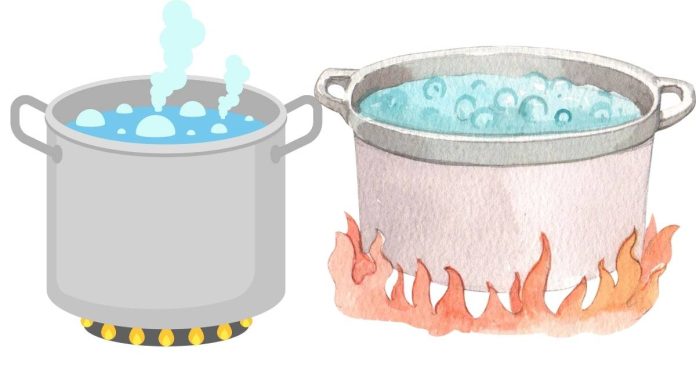Water is one of the most fascinating substances on Earth. Its behavior under different conditions has captivated scientists and curious minds for centuries. One of the most well-known temperatures in the study of water is 100°C, as it is the boiling point of water at standard atmospheric pressure. But what exactly happens to water when it reaches this temperature?
1. The Boiling Point of Water
At sea level, water boils at 100°C, which means it changes from a liquid to a gas. The boiling point, however, depends on atmospheric pressure. As altitude increases, atmospheric pressure decreases, and so does the boiling point of water. For example, at higher altitudes, water will boil at temperatures lower than 100°C. This is why water might boil at 90°C in the mountains!
2. Molecular Activity and Energy
When water is heated to 100°C, the molecules gain energy. Water molecules are always in motion, but as the temperature rises, the molecules move faster and faster. At 100°C, the water molecules have enough kinetic energy to overcome the attractive forces between them. This energy causes the liquid water to break free from its liquid state and transition into water vapor, also known as steam.
The transition from liquid to gas is called vaporization. This process requires energy in the form of heat, called the latent heat of vaporization. At 100°C, water absorbs a substantial amount of energy to convert from liquid to gas, which is why boiling water can take some time, even at a consistent temperature.
3. The Formation of Bubbles
As water heats up, small bubbles begin to form at the bottom of the pot or container. These bubbles are created by the vaporization of water molecules within the liquid. When the water reaches 100°C, the bubbles grow larger and rise to the surface. This is the point where you see the rapid bubbling and hear the sound of boiling water. The bubbling is a visual cue that the water is turning into steam.
Interestingly, the bubbles that form in boiling water are actually water vapor that escapes from the liquid as it transitions into gas. When the water is at or near 100°C, steam rapidly rises to the surface, and it escapes into the air.
4. Steam and Evaporation
Once water reaches the boiling point, the process of vaporization continues as long as heat is being applied. Steam, or water vapor, is released into the air, carrying heat away from the liquid. This is why you often see steam rising from a boiling kettle or pot of water. The steam is invisible at first, but it becomes visible when it cools and condenses into tiny droplets of liquid water in the air, creating the familiar mist.
While evaporation also occurs at temperatures below 100°C, boiling represents a much more rapid phase change where liquid water transforms into gas. At 100°C, the energy added to the water goes primarily into the phase transition rather than raising the temperature of the liquid further.
5. The Role of Pressure
As mentioned earlier, the boiling point of water is influenced by atmospheric pressure. If you increase the pressure, such as in a pressure cooker, water can boil at temperatures higher than 100°C. Conversely, if the pressure is reduced (for example, in high-altitude locations), water will boil at a lower temperature. This is a crucial factor in cooking and industrial processes, where controlling temperature and pressure can lead to faster cooking times and more efficient operations.
6. Water’s Importance at 100°C
The boiling point of water is not just a scientific curiosity; it has practical applications. From cooking food to sterilizing equipment and powering steam engines, water at 100°C is essential for many processes. In cooking, for example, boiling water is commonly used to prepare pasta, vegetables, and to brew tea. The heat from the boiling water transfers into the food, cooking it.
In the world of science and industry, water at 100°C is also used in processes like distillation, where impurities are separated from the liquid, and in steam power plants, where water is turned into steam to drive turbines and generate electricity.
Conclusion
Water at 100°C undergoes a fascinating physical transformation from liquid to gas. As it reaches the boiling point, the water molecules move faster, gaining energy until they can break free from the liquid state, creating steam. The boiling process is a crucial aspect of many natural and industrial phenomena, and understanding the behavior of water at 100°C helps us better appreciate its role in everyday life and scientific progress.
Whether you’re boiling water to make a cup of tea or using steam for industrial processes, water’s behavior at 100°C is an essential part of how we interact with this indispensable substance.


